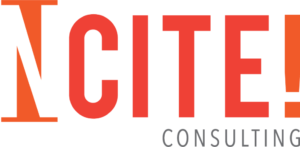It’s that time in the COVID era that you’ve earned your Crisis Manager Badge. Congratulations!
During this time, you’ve probably been mostly occupied with putting out fires and making adjustments to your daily operations. You’ve figured out how to manage a remote team, take in-person events on-line and disinfect door handles in your office in record time. These are all-important and needed all your energy the last 3 months, but now it’s time to take a look at your strategic plan.
The next 6-12 months of that plan are going to look A LOT different than the previous and there are some important things to consider as you review your plan with new eyes and likely a new trajectory.
Reaffirm VISION, MISSION & CORE VALUES
Have you cast a vision for your nonprofit? If not, now’s the time.
Is your mission still relevant? All mission statements should be reviewed on a regular basis. As our world shifts – rapidly – take a hard look as to what your purpose could and should be.
Last, what do you want to be known for? Core values underscore your nonprofit’s culture. Now, more than ever, be clear as to what you stand for, and help the public understand what these values in action look like.
Assess REVENUE
This is the fundraising question. Consider the following as you take a hard look at revenue.
- How are you going to fundraise? (Hint: it’s not with in-person special events)
- What kind of a hit have you taken with regard to non-existent in-person program delivery?
- What’s your plan in moving forward with current (and future) grant funders?
BOARD GOVERNANCE RESPONSIBILITIES & BOARD COMMITTEE WORK
It’s time for the board to get serious about their governance responsibilities. That’s shorthand for taking their risk management, legal and fiduciary responsibilities seriously. (Nothing like a little global pandemic to focus the group, am I right?) What might this look like for your nonprofit?
- Focus on a full board. Whose job is this? Everyone’s. Each board member has a different network to pull from. When prospecting for new board members, focus on the skill sets that you need now and moving forward – to stabilize and grow your organization.
- Next, get those prospective board member names to the board Nominating, Governance or Board Development Committee. It’s their job to move the prospects through the interview and vetting process, and eventually present a slate for nomination to the board.
- Get going with regular committee meetings, already! This means an annual calendar with board committee meetings, committee meetings with action items, and committee reports submitted for the board packet.
GOALS & METRICS
Be kind to yourself and your team. While a traditional strategic plan has 3 to 5 large goals, and subsequent strategies and tactics to achieve them, we’re not in traditional times. Our bandwidth is limited, and it just seems to take longer to get things accomplished. Set yourself up for success by deciding on what’s MOST important to move your mission forward – right now – and set one or two goals to collectively move forward on.
COMMUNICATIONS
Nobody likes to be left in the dark about decisions. Not your team, not your supporters. Craft a communication calendar for the next six-12 months. Decide what mediums you’ll use (web site, email, social media, snail mail). Commit to sharing what’s going on, where you’re making an impact, and how people can help!
STAFF
Folks, it’s hard to be isolated. Some of your staff may actually be performing at a higher level because they have a home office with a door that closes or less office distractions. Others may really be struggling because they are having no water cooler conversations. Have a discussion about regular check-ins with the entire group, just to make sure that you’re all ok. (The same thing goes for your board members and key volunteers.)


